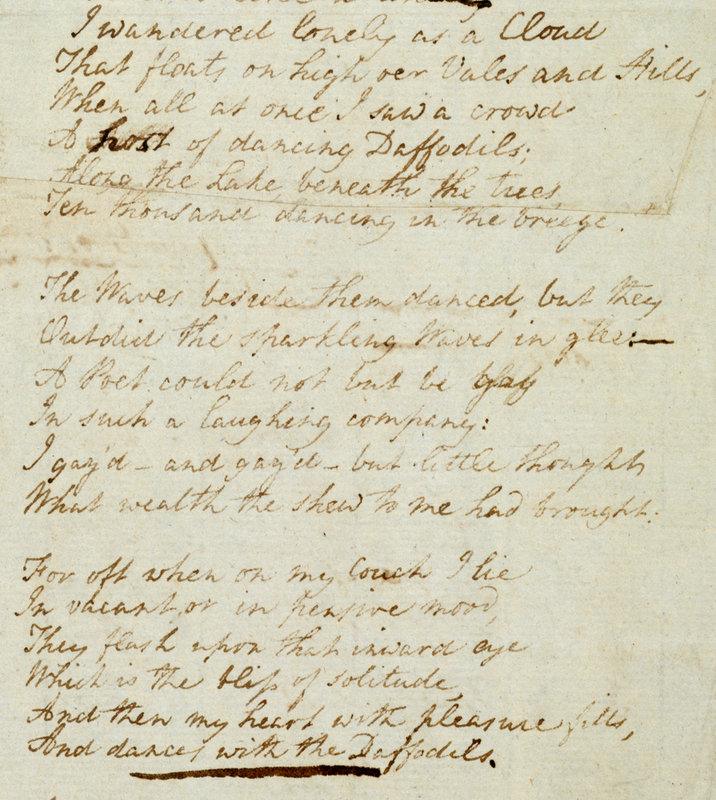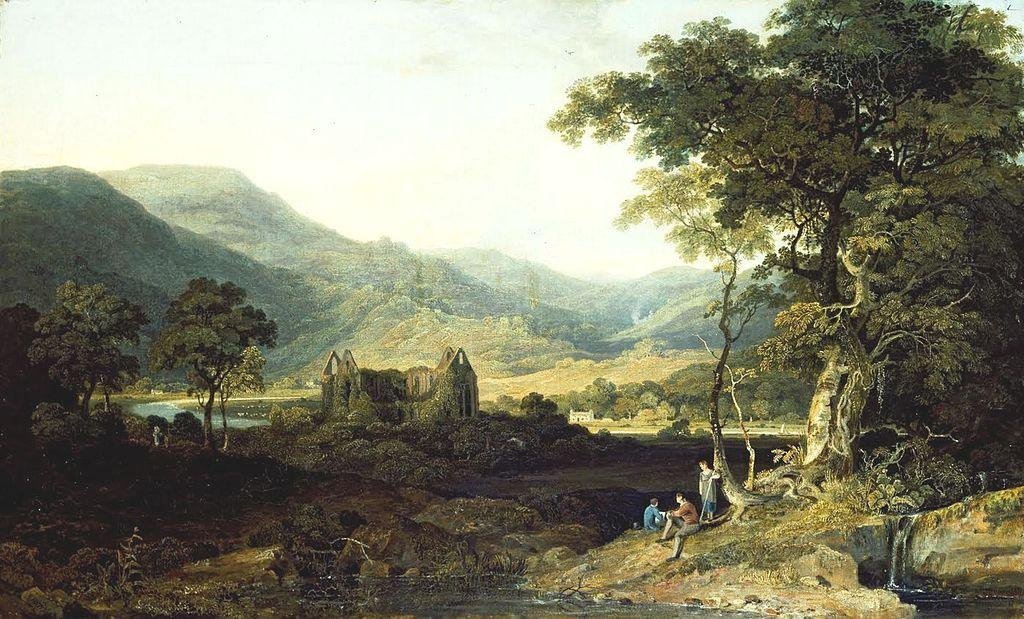William Wordsworth, one of the most celebrated poets of the Romantic era, found his muse in the breathtaking landscapes of Cumbria, England. His deep connection to nature not only shaped his poetry but also laid the groundwork for modern environmental thought. As we explore Wordsworth's inspirational legacy in Cumbria, we uncover the profound relationship between his work and the natural world, the specific landscapes that influenced his writing, and the enduring impact of his ideas on contemporary society. This journey through Wordsworth's life and work invites us to reflect on the importance of nature in our own lives and the need to preserve it for future generations.
The Heart of Nature: Wordsworth’s Cumbrian Inspiration
Wordsworth's poetry is imbued with a profound reverence for nature, which he viewed as a source of spiritual renewal and inspiration. Growing up in the picturesque Lake District, he developed a deep appreciation for the beauty and tranquility of the natural world. This connection is evident in his works, where he often personifies nature, portraying it as a nurturing force that shapes human experience. Wordsworth believed that nature had the power to heal and uplift the human spirit, a theme that resonates throughout his poetry.
The Lake District, with its rolling hills, serene lakes, and rugged mountains, served as Wordsworth's sanctuary. He often wandered the trails and valleys, drawing inspiration from the landscapes that surrounded him. His famous poem, "I Wandered Lonely as a Cloud," captures the essence of this connection, celebrating the beauty of daffodils dancing in the breeze. Wordsworth's ability to find joy and solace in nature reflects a universal longing for harmony with the environment, making his work timeless and relatable.

Moreover, Wordsworth's philosophy of nature extended beyond mere appreciation; he believed in the intrinsic value of the natural world. He argued that nature was not just a backdrop for human activity but a vital component of life itself. This perspective encouraged a sense of stewardship towards the environment, urging individuals to recognise their responsibility in preserving the beauty of the world around them. Wordsworth's writings serve as a reminder of the importance of nurturing our connection to nature, a message that remains relevant today.
In essence, Wordsworth's Cumbrian inspiration is a testament to the transformative power of nature. His poetry invites readers to pause, reflect, and reconnect with the natural world, encouraging a deeper understanding of our place within it. As we explore the landscapes that shaped his work, we gain insight into the profound impact of nature on the human experience and the enduring legacy of Wordsworth's vision.
Discovering the Landscapes that Shaped His Poetry
The Lake District is a treasure trove of natural beauty, and its diverse landscapes played a pivotal role in shaping Wordsworth's poetry. From the tranquil shores of Lake Windermere to the majestic peaks of Helvellyn, each location holds a special significance in his body of work. Wordsworth often drew upon these landscapes to evoke emotions and convey deeper philosophical ideas, creating a rich tapestry of imagery that resonates with readers.
One of the most iconic locations associated with Wordsworth is Dove Cottage in Grasmere, where he lived for nearly a decade. This quaint cottage, surrounded by lush gardens and breathtaking views, served as a creative haven for the poet. It was here that he penned some of his most famous works, including "Lines Composed a Few Miles Above Tintern Abbey." The surrounding hills and valleys provided a constant source of inspiration, allowing Wordsworth to immerse himself in the beauty of the landscape and translate it into verse.

Another significant site is the picturesque village of Keswick, which inspired Wordsworth's reflections on the relationship between humanity and nature. The nearby Derwentwater, with its shimmering waters and stunning backdrop of mountains, became a symbol of tranquility and introspection in his poetry. Wordsworth's ability to capture the essence of these landscapes in his writing invites readers to experience the beauty of the Lake District through his eyes, fostering a deeper appreciation for the natural world.
As we explore these landscapes today, we can still feel the echoes of Wordsworth's presence. Walking the same paths he once traversed, we are reminded of the profound connection between nature and creativity. The beauty of the Lake District continues to inspire artists, writers, and nature lovers alike, serving as a testament to the enduring power of Wordsworth's legacy. By immersing ourselves in these landscapes, we not only honor his memory but also cultivate our own relationship with the natural world.
Wordsworth’s Influence on Modern Environmental Thought
William Wordsworth's reverence for nature has had a lasting impact on modern environmental thought, inspiring generations to recognise the importance of preserving the natural world. His belief that nature is a source of spiritual and emotional nourishment resonates with contemporary movements advocating for environmental conservation and sustainability. Wordsworth's writings encourage us to view nature not merely as a resource to be exploited but as a vital component of our existence that deserves respect and protection.
In his poetry, Wordsworth often emphasised the interconnectedness of all living things, a concept that aligns closely with modern ecological principles. He understood that human well-being is intricately linked to the health of the environment, a notion that has gained significant traction in today's discussions about climate change and biodiversity loss. By advocating for a harmonious relationship between humanity and nature, Wordsworth laid the groundwork for the environmental movement, inspiring individuals to take action in defense of the planet.
Furthermore, Wordsworth's emphasis on the emotional and psychological benefits of nature has influenced contemporary approaches to mental health and well-being. His belief that immersion in the natural world can lead to healing and rejuvenation is echoed in modern therapeutic practices that encourage spending time outdoors. The concept of "nature therapy" has gained popularity, highlighting the importance of reconnecting with nature for mental and emotional health, a legacy that can be traced back to Wordsworth's profound insights.
As we navigate the challenges of the 21st century, Wordsworth's vision serves as a guiding light, reminding us of the importance of nurturing our relationship with the environment. His poetry continues to inspire individuals and movements dedicated to environmental advocacy, urging us to recognise the beauty and value of the natural world. In a time when the planet faces unprecedented challenges, Wordsworth's legacy encourages us to take action, fostering a sense of responsibility and stewardship for the earth we inhabit.
Preserving the Legacy: Wordsworth’s Impact Today
The legacy of William Wordsworth is not confined to the pages of his poetry; it lives on in the ongoing efforts to preserve the landscapes that inspired him. The Lake District, designated a UNESCO World Heritage Site, is a testament to the importance of protecting natural beauty for future generations. Conservation initiatives and sustainable tourism practices aim to maintain the integrity of this stunning region, ensuring that it remains a source of inspiration for artists, writers, and nature enthusiasts alike.
Wordsworth's influence can also be seen in the numerous literary festivals and events that celebrate his work and the natural world. The Wordsworth Trust, based in Grasmere, plays a vital role in promoting his legacy through educational programs, exhibitions, and community engagement. By fostering a deeper understanding of Wordsworth's connection to nature, these initiatives inspire individuals to appreciate and protect the environment, echoing the poet's own sentiments.
Moreover, Wordsworth's impact extends beyond literature and conservation; it has permeated popular culture and the arts. His themes of nature, beauty, and the human experience continue to resonate with contemporary artists, musicians, and filmmakers. The enduring relevance of his work serves as a reminder of the power of poetry to inspire change and provoke thought, encouraging us to reflect on our relationship with the natural world.
Conclusion
The exploration of William Wordsworth's inspirational legacy in Cumbria reveals a profound connection between nature and creativity. His poetry not only captures the beauty of the landscapes that shaped him but also serves as a call to action for environmental stewardship. As we honor Wordsworth's legacy, we are reminded of the importance of preserving the natural world for future generations, ensuring that the beauty and inspiration he found in Cumbria continue to thrive. By embracing his vision, we can cultivate a deeper appreciation for nature and foster a sense of responsibility towards the environment, creating a more harmonious relationship with the world around us.
William Wordsworth's legacy is a powerful reminder of the transformative power of nature and the importance of nurturing our connection to it. As we explore the landscapes that inspired his poetry, we are invited to reflect on our own relationship with the natural world and the responsibility we hold in preserving it. Wordsworth's insights continue to resonate today, inspiring individuals and movements dedicated to environmental conservation and sustainability. By honoring his legacy, we can cultivate a deeper appreciation for the beauty of nature and work towards a more harmonious existence with the world around us.



